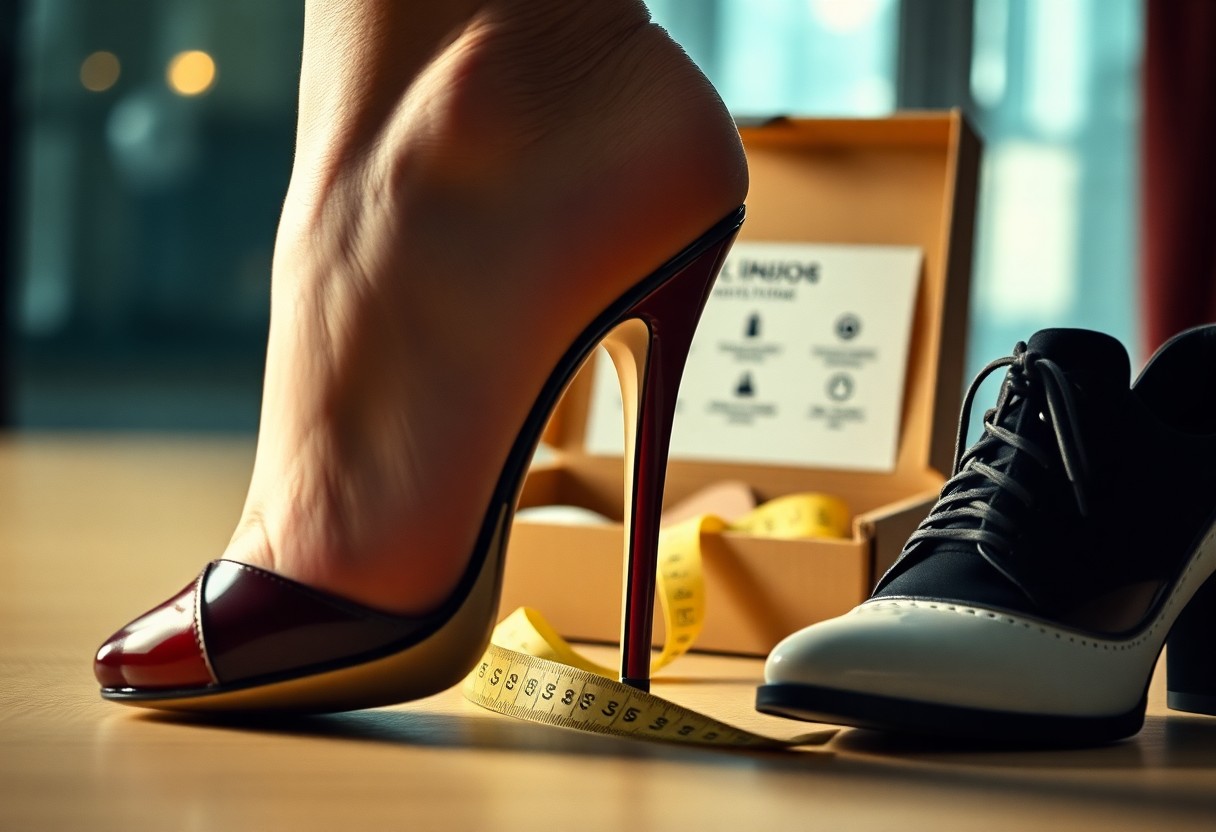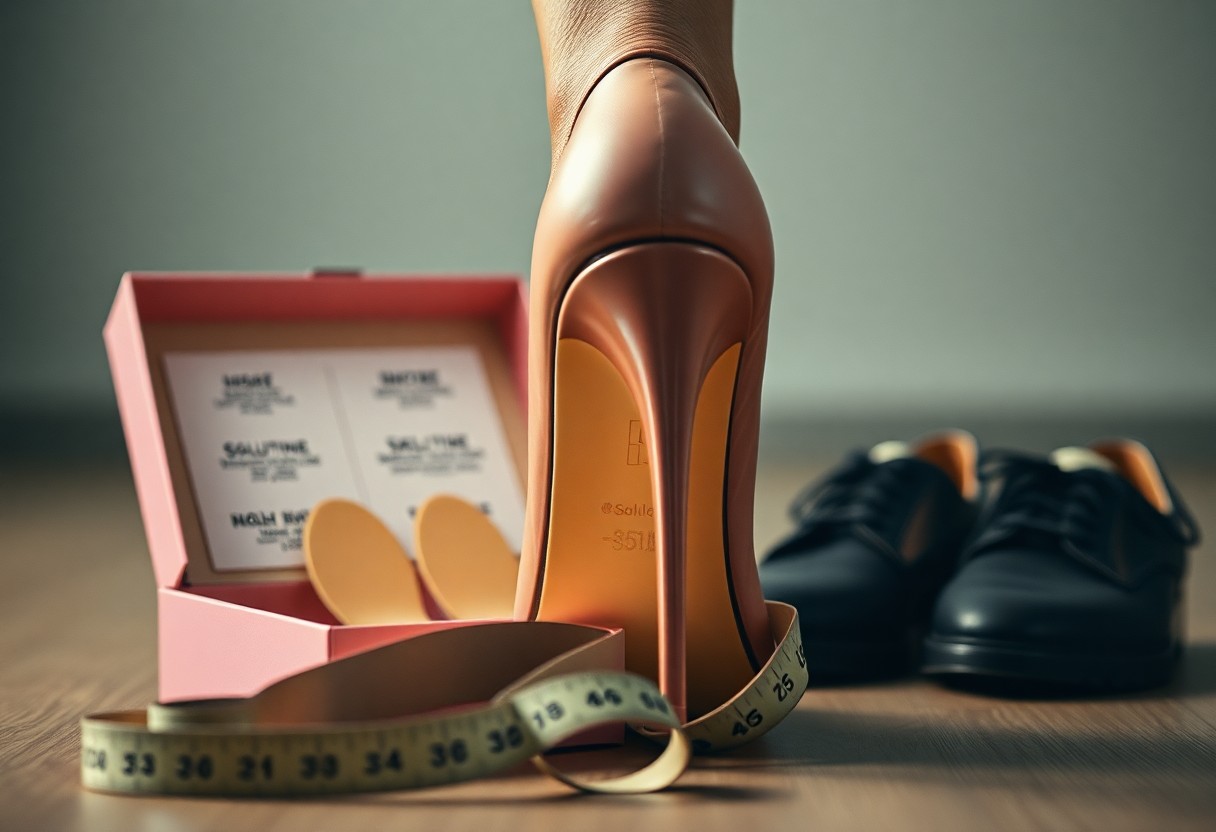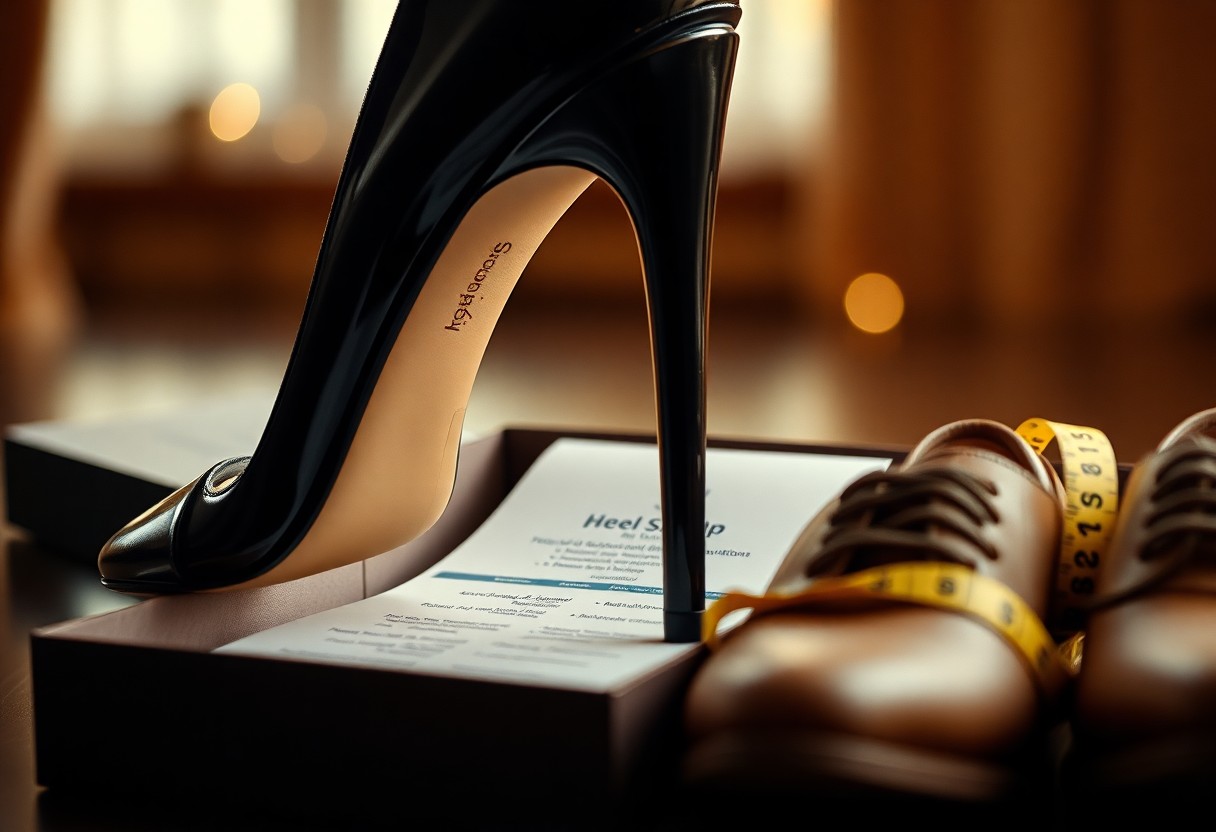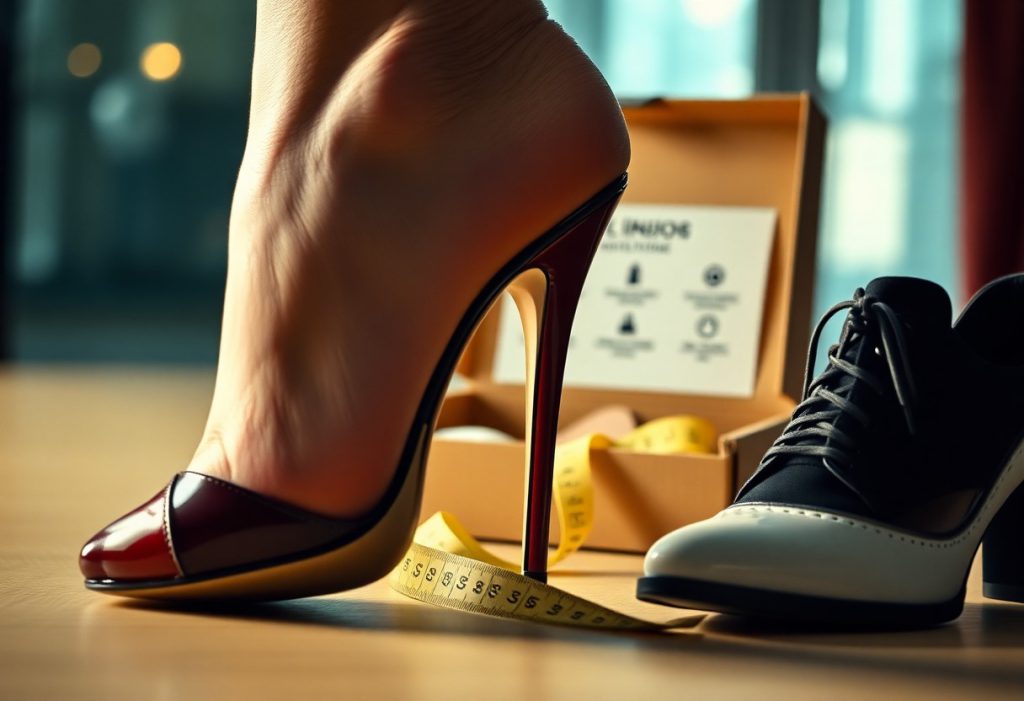Have you ever encountered the irritating problem of heel slip while trying to enjoy your favorite footwear? You’re definitely not alone in this experience! This widespread issue can lead to not only discomfort but also an unsatisfactory fit that detracts from your overall shoe experience. By enhancing your understanding of the underlying causes and effective prevention strategies, you can significantly improve your shoe-wearing experience. This detailed guide will explore the nuances of heel slip, outlining the two main types, how to accurately identify them, and, most importantly, offering practical solutions for prevention and resolution. By the conclusion, you'll possess valuable insights to ensure your shoes fit securely and comfortably.
In-Depth Exploration of Heel Slip: Understanding Causes, Effects, and Solutions
Before diving into the complexities of heel slip, it’s vital to comprehend the basic concepts surrounding this issue. Heel slip occurs when your heel shifts out of its designated position within your shoes, leading to both discomfort and an overall compromise in the fit. Grasping this phenomenon is essential for anyone aiming to maintain both comfort and style in their footwear selections. Properly addressing heel slip can elevate your shoe experience by ensuring that your footwear remains snug and supportive throughout daily activities.
Identifying the Two Main Types of Heel Slip for Better Solutions
Heel slip can generally be divided into two primary categories:
- Oversized shoes, where your heel is prone to easily slipping out of the shoe, and
- Shoes that fit well but come equipped with a stiff heel counter or slippery leather, which may cause slight movements in the heel area during wear.
Understanding which type of heel slip you are experiencing is crucial for effectively addressing the issue. This identification will guide you toward appropriate solutions tailored to your specific situation.
| Type of Heel Slip | Description |
| Oversized | Your heel easily exits the shoe while walking, indicating a size issue |
| Fits but Stiff/Slick | Minor heel movement occurs due to a stiff heel counter or slick leather surface |
| Narrow Heel | Your foot has a naturally narrow heel, complicating the quest for an ideal fit |
| BREAK-IN | The leather gradually softens and adapts to your foot shape over time, which can minimize heel slip |
Effective Identification Techniques for Heel Slip: Recognizing the Issue
Studies suggest that around 80% of individuals can recognize when a shoe is excessively large. However, the real challenge lies in determining whether slight heel movement is due to the shoe being too small or simply needing a break-in phase. Additionally, it’s important to acknowledge that as you wear your footwear, the leather will soften and the insole will mold to the unique shape of your foot, which can influence the overall fit. So, how can you discern between acceptable heel slip and a shoe that simply doesn’t fit well?
Uncovering the Root Causes of Heel Slip for Effective Management
If you’re struggling with heel slip, identifying the underlying cause is essential for effective resolution. There are two main factors that can contribute to heel slippage in your shoes.
Evaluating Whether Your Shoes Are Too Large
To ascertain if your shoes are indeed too large, try tightening the laces completely. If your heel continues to slip out, this clearly indicates a fit issue. You should never be able to walk out of your shoes or easily remove them without first loosening the laces. Achieving a proper fit is crucial to ensure both comfort and security while wearing your footwear.
Understanding the Impact of Stiff Heel Counter and New Leather on Fit
Delving further, two significant elements can contribute to heel slip: a stiff heel counter and new, slippery leather materials. Even if your shoes fit adequately, these factors can still cause slight heel movement. Upon initially wearing new shoes, the stiffness of the heel counter combined with the new leather may lead to some heel movement. However, with time and consistent wear, the leather will soften, and the heel counter will gradually adapt to the contours of your heel, resulting in a more secure fit. This adaptation process generally takes about 7-10 wears, and it’s a normal aspect of breaking in new footwear.

Proactive Strategies to Prevent Heel Slip for Optimal Comfort
Preventing heel slip is most effectively achieved through proactive measures at the time of purchase and during the break-in period of your shoes. By understanding the importance of proper fitting and the break-in process, you can significantly decrease the chances of heel slippage, leading to a more comfortable and secure fit overall.
Understanding the Critical Importance of Proper Shoe Fit
To achieve a comfortable and secure fit, selecting shoes that conform well to your feet is vital. Avoid purchasing shoes that are excessively large, as this will likely result in heel slip and overall discomfort. Make it a priority to try on shoes before making any purchases, and walk around in them to confirm that they feel both comfortable and secure during movement. A proper fit is crucial in preventing heel slip.
Mastering the Art of Properly Breaking in Your Shoes
Effectively breaking in your shoes can also help prevent heel slip. When you first wear your shoes, the leather is typically stiff, and the heel counter remains upright, which may result in some movement in the heel area. However, as you continue to wear the shoes, the leather will gradually soften, and the heel counter will begin to mold to the unique shape of your heel, resulting in a more secure fit over time. Even shoes that initially fit well can still require a break-in period to achieve the best fit. This break-in phase can take about 7-10 wears, and it’s essential to remain patient and not become discouraged if you experience some heel movement at first. By effectively breaking in your shoes, you can enjoy a comfortable, secure fit while minimizing the risk of heel slip.

The Fundamental Role of Insole and Heel Counter in Achieving Shoe Fit
When addressing heel slip, two crucial components come into play: the insole and the heel counter. Understanding how these elements interact is vital for promoting a secure and comfortable fit.
Examining the Insole and Its Influence on Shoe Fit
As you wear your shoes, your body weight begins to create an imprint of your feet on the insoles, allowing you to sink deeper into the shoes. This process enhances the overall fit, as sinking down slightly provides a tighter grip in the heel area. When your foot is positioned higher, even by a mere 1mm, the likelihood of heel slip increases compared to when you are securely locked in.
Evaluating the Importance of Heel Counter Material and Its Molding Process
One of the main contributors to heel slip is the stiffness of the heel counter, particularly when the leather is new and slippery. However, with continued wear, the material situated between the leather and lining starts to mold to the shape of your heel, providing a better grip. Although the heel counter may initially feel stiff, it will eventually conform to your heel shape as the shoes are worn. As you sink into the footbed, these combined factors will contribute to a more secure lock in the heel area. This molding process may take time, but it is a normal part of breaking in a new pair of shoes.

Strategies for Achieving the Perfect Fit for Your Shoes
To ensure a comfortable and secure fit, determining the right shoe fit is paramount. This process can be somewhat challenging, especially when dealing with the issue of heel slip.
Effective Guidelines for Trying on Shoes to Secure the Best Fit
When trying on shoes at the store, aim to do so in the afternoon when your feet are likely to be slightly swollen. Wear the same type of socks or hosiery that you plan to use with the shoes. Walk around the store to confirm that the shoes feel comfortable and do not slip off your heels during movement. This practice can help ensure you find shoes that fit well and provide the support you need.
Understanding Acceptable Heel Play During the Break-In Period
A slight amount of heel play can be a normal aspect of the break-in process. Don’t be alarmed if you notice some movement in the heel area; this doesn’t necessarily mean that the shoes are too large. It’s essential to keep in mind that the leather will soften and adapt to your foot shape over time. As you continue to wear your shoes, the heel counter will adjust to fit your heel snugly, ensuring a better lock in the heel area. Thus, accepting some degree of heel play can be a normal part of the process and isn’t inherently indicative of an improper fit.
Practical Solutions for Individuals with Narrow Heels to Combat Heel Slip
Having a narrow heel doesn’t mean you have to accept a lifetime of dealing with heel slip. There are effective strategies available to address this particular issue, which we will explore in the following sections.
Investigating Custom Shoe Options for a Tailored Fit
If you find it difficult to secure a proper fit in ready-to-wear shoes, you might want to explore custom options. This could involve investing in bespoke shoes that are tailored to your measurements or working with a cobbler to modify your existing footwear to better accommodate your unique foot structure. Custom solutions can provide the perfect fit and alleviate the common issue of heel slip.
Embracing the Realities of Fit Imperfections for Better Comfort
Finding the perfect fit in ready-to-wear shoes can be challenging, particularly for those with narrow heels. Accepting that a small degree of heel play is quite normal can be a liberating change in perspective. With time and wear, the leather will conform to your foot, enhancing the overall fit. Properly breaking in your shoes is a natural and essential process that can help mitigate heel slip issues. By embracing these minor imperfections and allowing time for your shoes to adapt, you can achieve a comfortable and secure fit, even with ready-to-wear options.
Summarizing Essential Insights on Heel Slip and Practical Solutions
In summary, you now possess a deeper understanding of heel slip, its underlying causes, effective prevention strategies, and practical solutions. By distinguishing between a shoe that is too large and one with a stiff heel counter, you’ll be better equipped to make informed decisions when trying on new footwear. Remember that breaking in your shoes is crucial, as the leather will gradually mold to your foot shape over time, leading to a more secure fit. If you continue to experience significant heel slip, consider exploring custom options to find the perfect fit for your unique foot structure.
Common Questions and Answers About Heel Slip
What is heel slip, and how does it affect the fit of my shoes?
Heel slip refers to the movement of your heel within the shoe, which can occur due to either the shoe being too large or a stiff heel counter combined with slippery new leather. There are two distinct types of heel slip: one occurs when the shoe is excessively large, and the other happens when the shoe fits well but the heel counter remains stiff, causing some movement. Understanding these differences is essential for achieving a comfortable and secure shoe fit.
What are effective methods to prevent heel slip, and what solutions exist?
To prevent heel slip, ensuring a proper fit is of utmost importance. If you determine that the shoe is too large, tighten the laces to see if that improves the fit. If the heel counter feels stiff, it’s advisable to break in the shoe gradually by wearing it regularly, as the leather will soften and adapt to the shape of your foot over time. It’s also important to consider the insole and heel counter, as both significantly influence heel slip. If you still experience heel slip after breaking in your shoes, you may need to explore custom options if you have a narrow heel.
How can I determine if I have a narrow heel, and what are my options?
If you consistently experience heel slip with most shoes, even after breaking them in, it’s likely that you have a narrow heel. In this case, finding a perfect fit without resorting to custom solutions can be quite challenging. Consider consulting a professional shoe fitter or investigating custom shoe options to secure a comfortable, well-fitting pair tailored to your unique foot shape.
The Article Heel slip explained causes prevention and solutions appeared first on My Shoes Finder
The Article Heel Slip: Causes, Prevention, and Effective Solutions Was Found On https://limitsofstrategy.com



I’ve found heel slip to be a surprisingly common issue that many people overlook until it becomes a genuine nuisance. The discomfort it brings can really detract from the enjoyment of wearing a beloved pair of shoes. In my experience, it often seems to be worse with certain styles—especially those with looser fits or softer materials. For example, I recently bought a pair of ankle boots that I was thrilled about until I discovered that every step felt like a mini roller coaster, with my heel popping out with every stride. It was disheartening, especially since I had spent a considerable amount of time choosing them.